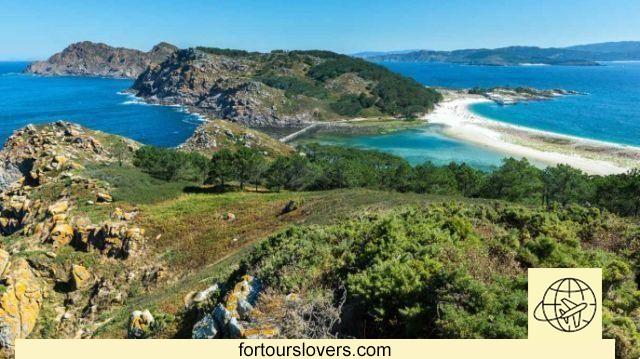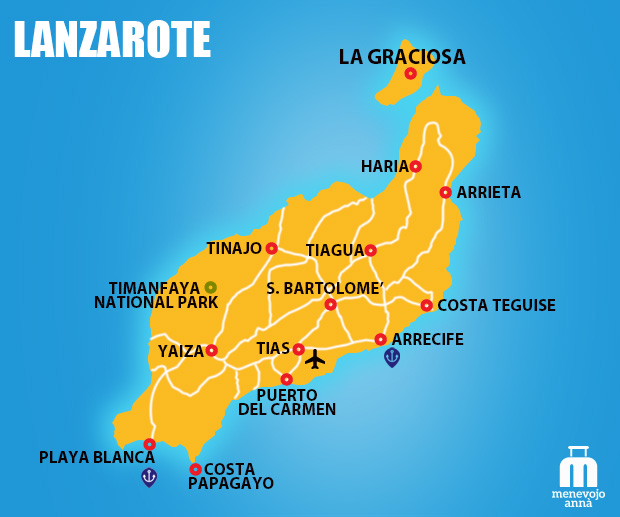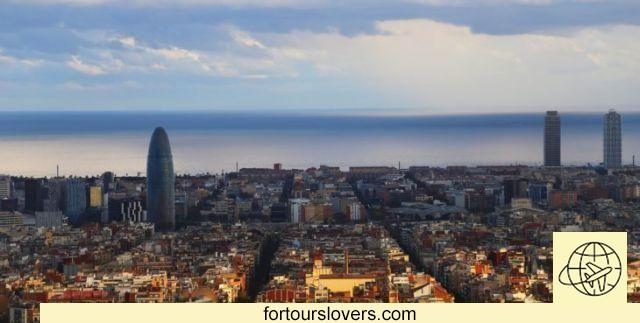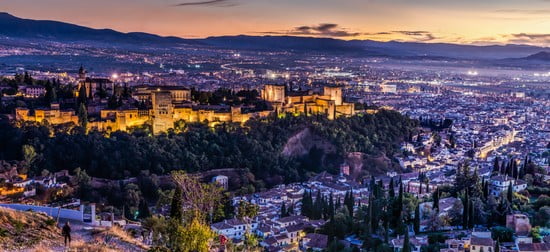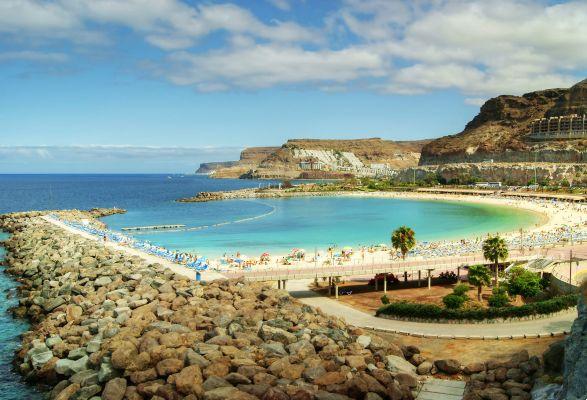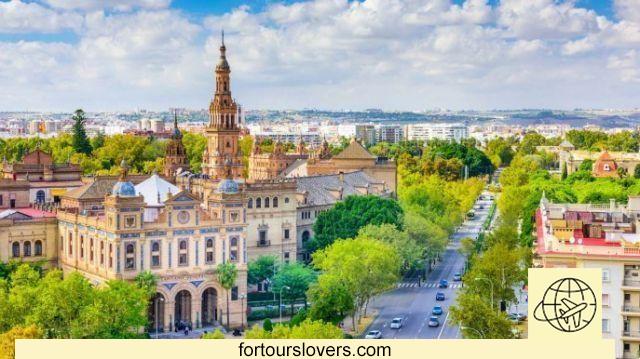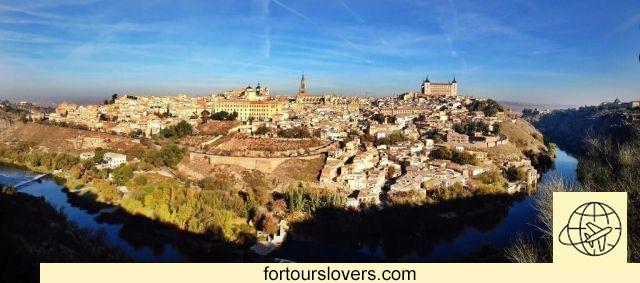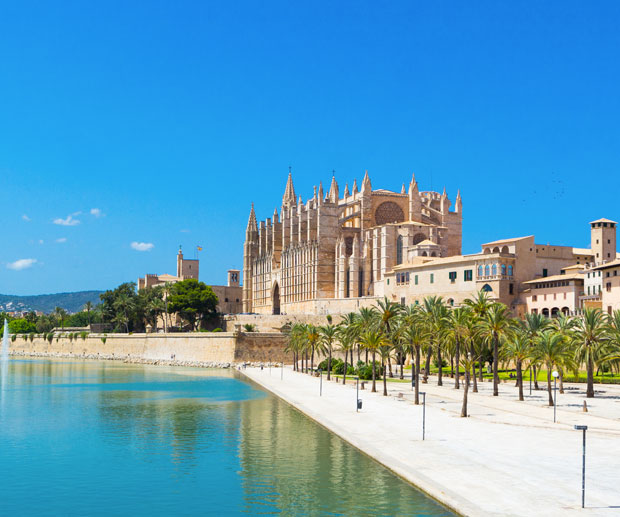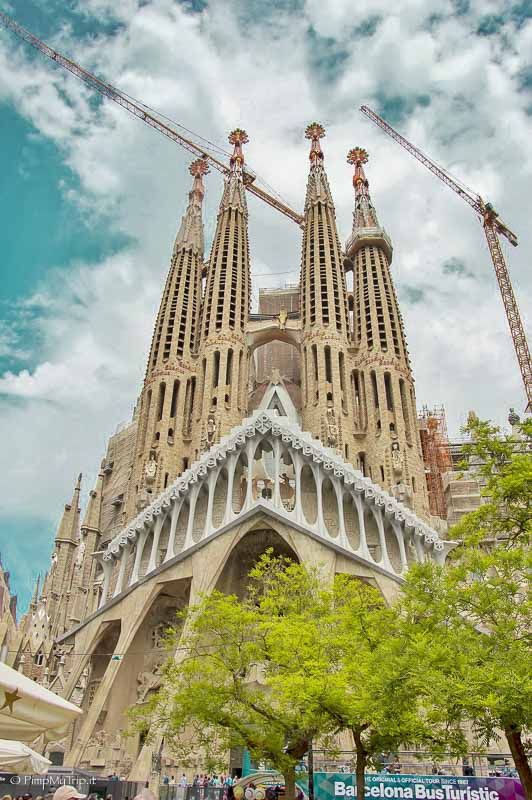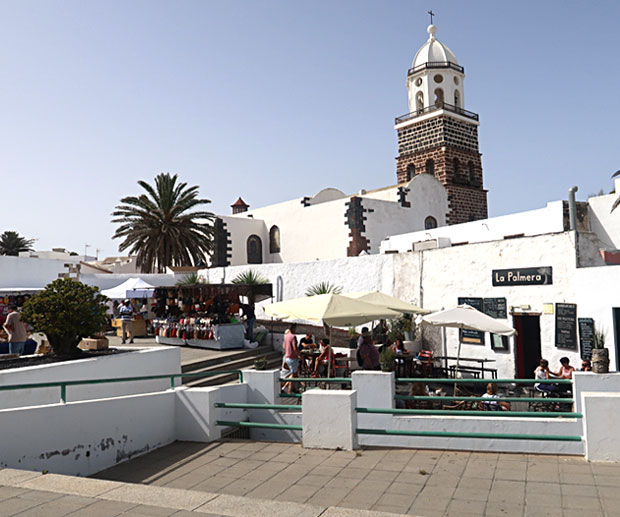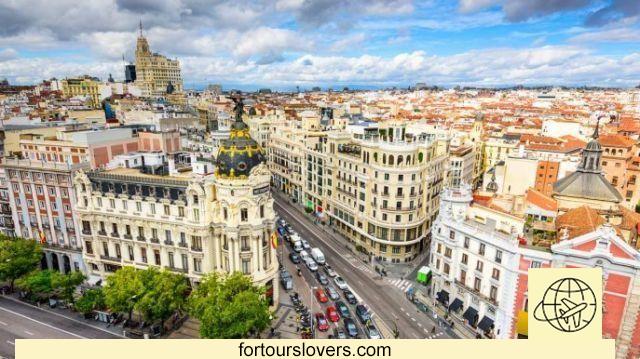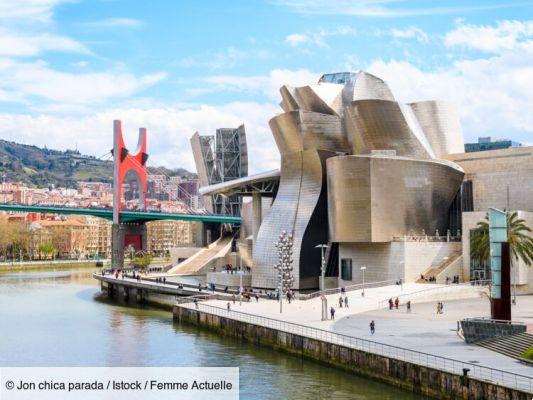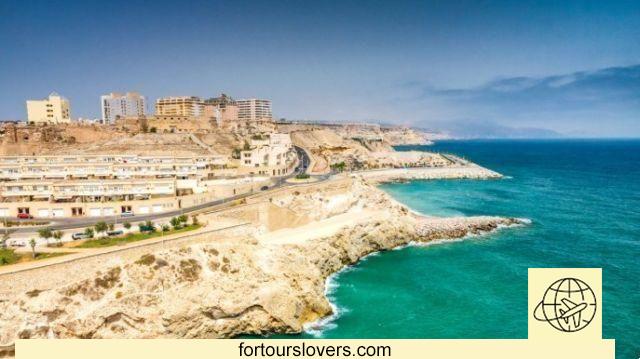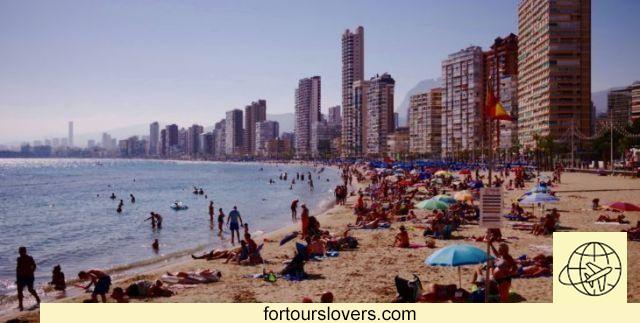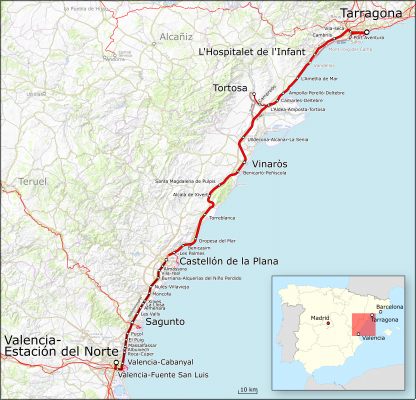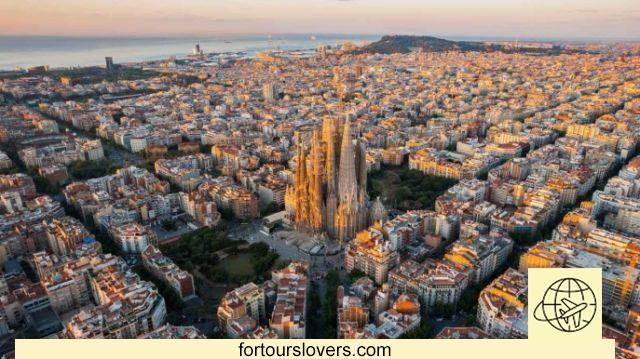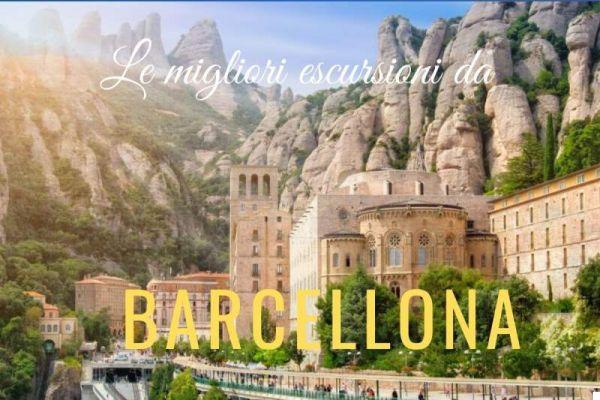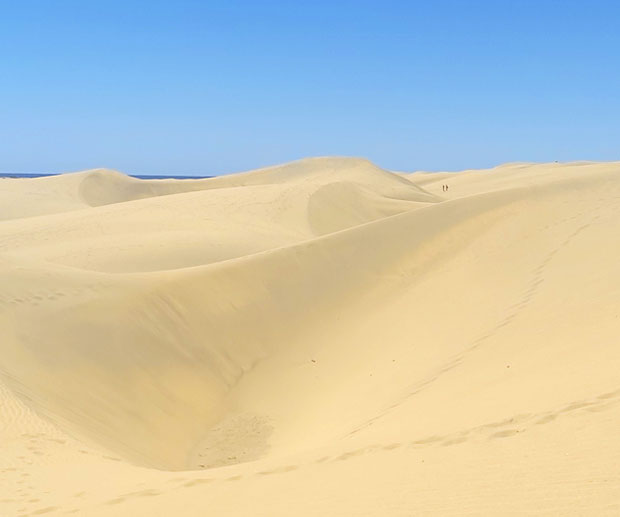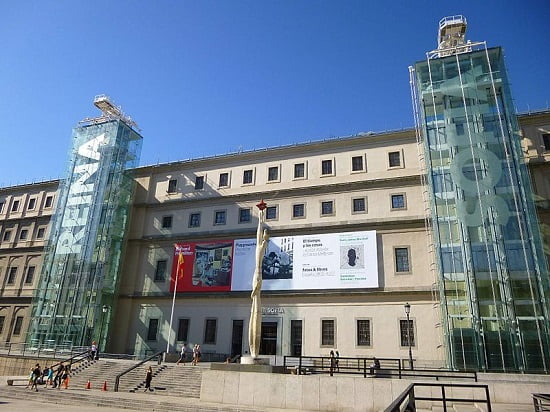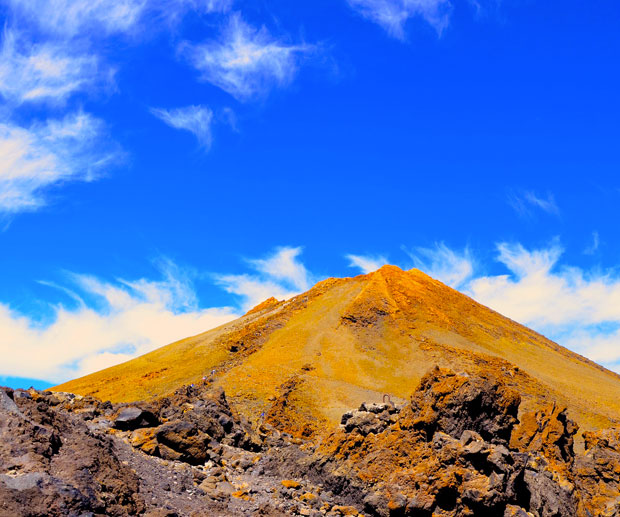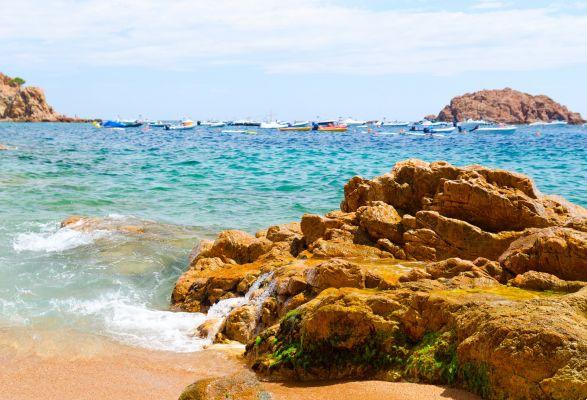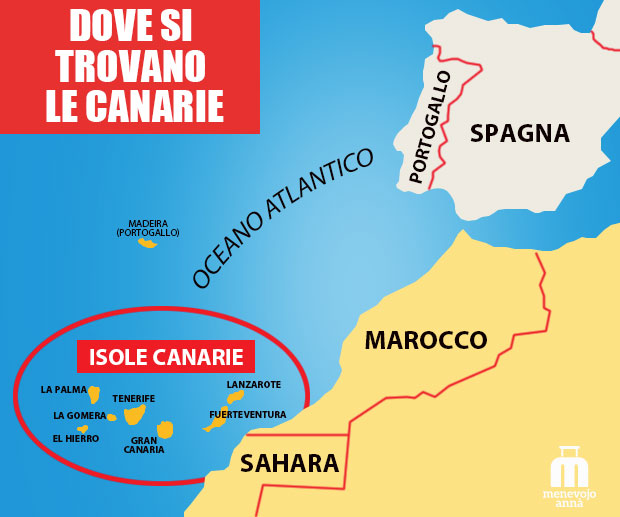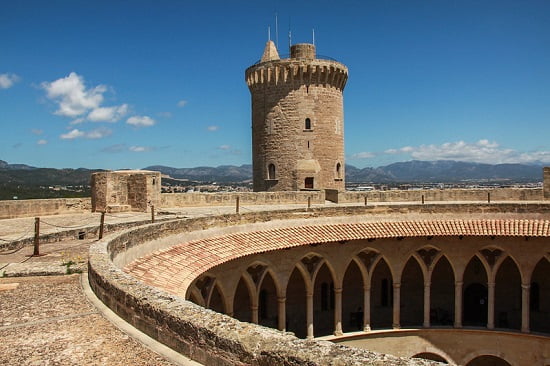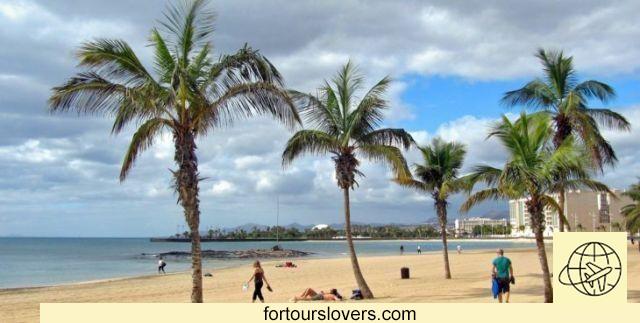
Lanzarote
11 things to do and see in Lanzarote and 1 not to doThere are two i added values of Lanzarote, inter alia closely connected to each other: on the one hand, the extraordinary volcanic nature (Lanzarote is UNESCO Biosphere Reserve since 1993); on the other, the creativity of César Manrique (1919 - 1992), the man who, more than any other, managed to enhance the environments of his native island, making it the only artistic-cultural "mission" from a certain moment on. After all, Lanzarote is a good place to get inspiration from, not only for the volcanic landscapes full of mystery, but also for the wonderful climate: never below 18 ° C, almost never above 25 ° C. In short, in Lanzarote there is everything you need for a holiday of relaxation and contact with nature. Below we go to see the main ones points of interest of the island. Happy reading.
1 International Museum of Contemporary Art
Our trip to Lanzarote can only start from Reef which, in addition to being the capital of the island, is also the birthplace of César Manrique. It is therefore inevitable for the multifaceted artist to take great care to enhance the places of origin, starting with Castillo of San Josè (see photo) on the city port. It is a small military fortress of the XNUMXth century transformed into most important museum of contemporary art in the Canary archipelago. Not only that, because together withmodern art (the collection houses the works of some of the greatest Spanish 900th century artists: Picasso, Tapies, Mompó, Miró and others), there is also room for the gastronomy. A part of the castle, in fact, is used as a restaurant. A restaurant with an international flair, overlooking the beautiful sea of Lanzarote. More information on timetables, prices and how to visit the following link: http://www.cactlanzarote.com/cact/miac-castillo-san-jose (English version available).
2 César Manrique Foundation
Whoever wants to deepen the figure of César Manrique, in addition to the aforementioned Museum of Contemporary Art, has at least two other stops to do: the first is a visit to the homonymous Foundation, halfway between Arrecife and Costa Teguise; the second, which we will discuss later, is the house-museum in the small village of Haria (see point 8). In fact, there are many more attractions in some way attributable to Manrique, without forgetting the value of some insights which, fortunately, have allowed us to preserve (at least in part) the environment of Lanzarote. Just to name two, however sufficient to give the idea of the great influence of this artist on the local community: the absence of mega-resorts and large billboards, towards which Manrique has always expressed strong dissent. Returning to the Fundacion César Manrique, it is the artist's house in locality Taro de Tahice and houses a rich collection of his works, plus others than Spanish artists of the '900, among which the names of Picasso e Miró. As for the foundation's activities, they are, and could not be otherwise, in continuity with Manrique's human, intellectual and artistic values, and therefore all aimed at encouraging the interaction between art and nature and the sustainable development of the territory. For more information visit the Official site: www.fcmanrique.org.
3 Teguise Market
Teguise, theancient capital of Lanzarote, worth a visit regardless Sunday market. It is not very touristy, but it is still worth wandering around the streets and alleys that draw one town halfway between a Spanish village and a North African one. That said, the open-air market it attracts thousands of visitors who wander curiously among the stalls that exhibit costume jewelry and other crafts, those who are dedicated to street food, and the spaces reserved for artists who want to perform live. In short, a market at the same time quiet and a little' nonconformist, in perfect line with the atmosphere of Lanzarote, an island that thrives on creativity and slow rhythms, strengthened by the teachings of its “vate” César Manrique. For more information on the locality visit the institutional website: teguise.es.
4 Cactus Garden
Il Jardin de Cactus it was the last, and according to many the most successful, of César Manrique's interventions in Lanzarote. Level of appreciation aside, this work, more than the others, reveals theinteraction between art and nature at the basis of "Manrique-thought". Not everyone knows, in fact, that cacti have always been part of the island's landscape, especially on its northern side, where the garden is located. Indeed, their great availability has favored the birth of a thriving business:breeding of scale insects, small insects that live on cacti, and from which the inhabitants of the villages north of Lanzarote obtained a red dye subsequently put on the market. Therefore, the choice of making a circular garden of 5000 square meters, exclusively dedicated to cacti from all over the world (over 1500 varieties, all with descriptive labels) is consistent with the historical experience of Lanzarote. Consistent with the history and, according to the number of visitors, with the tourist present of the island. In short, the Jardin de Cactus of Guatiza it is an unmissable stop on a visit to Lanzarote. For learn more on prices and visiting hours click here.
5 Cueva de Los Verdes
Formerly used as a refuge by the inhabitants of Lanzarote fleeing the Maghreb piracy, Cueva de Los Verdes is a abyssal cavity formed following the volcanic upheavals that, about 5000 years ago, affected the northern side of the island. César Manrique, but more than him the artist Jesús Soto (1928 - 2003) transformed this cave into atourist attraction, managing to enhance the countless light games result of the solidification of the lava. There guided tour to the cave of Cueva de Los Verdes takes about 45 minutes and allows you to learn more geological and naturalistic peculiarities of this ravine which also hosts in autumn and spring jazz and blues concerts. Considering that in different points of the cave it is necessary to bend down to continue, theentrance is not recommended for those with back problems. For more information for timetables, prices and related services click here.
6 Jameos del Agua
After Cueva de los Verdes, another area of great naturalistic interest: Jameos. It is a underground cave complex (Jameo Chico, Jameo Grande, Jameo Redondo) in which the ocean made its entrance forming one spectacular salt lake of blue color. In the presence of these wonderful natural sculptures, prodigies of the volcanism of Lanzarote, César Manrique had the intuition to add a bar, a restaurant, a 600-seat auditorium and a wonderful swimming pool that alone is worth the entrance. It's not over, because Jameos del Agua is thehabitat of the blind albino crab (scientific name: Munidopsis polymorpha), a unique species, endemic to Lanzarote and which must therefore be respected during the visit. The only one contraindication, large number of steps to do, a circumstance that suggests to those with motor and / or respiratory problems to spare themselves the entrance. For times, prices, methods and time of visit of the site of Jameos del Agua click here.
7 Isola Graciosa
Montana Clara, Alegranza, Roque del Este, Roque del Oeste and Isla Graciosa: these are the 5 small islands that, together with the Famara cliff in Lanzarote, they form theChinijo Archipelago. Of these, only Isla Graciosa can be visited independently (the others only through organized excursions). An island of 27 square kilometers where about 700 people live permanently, mostly concentrated in Caleta del Sebo village. The ideal is to spend a day there, if only to experience for yourself what it means to live far, not only physically, from the comforts of modernity to which we are so accustomed to seem "natural". And, on the other hand, on Isla Graciosa, the roads are not asphalted and if you feel like going around them by bike, forget about meeting bars, restaurants or vending machines on the street for refreshment. Beyond the small village of Caleta del Sebo, where children still play barefoot on the street, you will find nothing but wonderful views, sand and sea. The beaches, it goes without saying, are beautiful and with inviting names: Playa Francesa (half an hour's walk from Caleta del Sebo), Playa de las Conchas (where it is better not to dive due to strong currents), Playa Lambra, Playa Amarilla e Playa del Los Conejos, just to remember the most famous. THE Ferries they start from the small seaside village of Órzola (www.lineasromero.com) and take about 30 minutes for the crossing. To try!
8 César Manrique House Museum
According to many the César Manrique House Museum in the beautiful village of Haría, in the north of Lanzarote, in terms of knowledge, the Foundation of the same name which we spoke of previously is not valid (see point 2). However, the visit to the last residence of the most famous man on the island is equally useful to deepen another trace of his artistic belief: the modern reinterpretation of the traditional architecture of Lanzarote. An advanced compromise between the rural dimension of the island and the typical comforts of modernity that here, in this museum-sanctuary where even Manrique's wardrobe has been preserved, finds a perfect synthesis. Especially interesting is the visit to the atelier where the latest works to which the artist was dedicating himself before losing his life in a road accident are exhibited. After the Casa del Palmeto di Manrique it is worth visiting the surrounding village as well. Haría (see photo), as mentioned at the beginning, is a beautiful country, where the bucolic dimension clearly prevails among palm trees, bougainvillea and plants of all kinds. To be seen!
9 Timanfaya National Park
Do you want to visit Mars? While waiting for the US (NASA), European (ASE) or Russian (RKA) space agencies to finally turn the dream into reality, you have to settle for Parque National de Timanfaya, on the west coast of Lanzarote. A reserve of 51 square kilometers, whose landscape springs from one of the scariest volcanic explosions in modern history. A cataclysm that starting from 1 September 1730, a date well engraved in the history of Lanzarote, caused destruction and death for 6 long years, finally returning a surreal landscape of black earth and sparse vegetation. Landscape dominated by Montañas del Fuego, heart of the park where Manrique - and who else - installed "Islote de Hilario", a panoramic point where visitors are entertained with a series of small experiments revealing the volcanic nature, which is still active, of the locality. The only difficulty is due to the absence of public transport to reach the entrance to the reserve. However, it is sufficient to bring a bicycle to reach the site comfortably. Inside the park a whole series of guided excursions (trekking, by bus, by camel) for which, however, it is necessary to book at the following link: http://www.cactlanzarote.com/en/cact/montanas-del-fuego-timanfaya.
10 Puerto del Carmen
A list of things to do in Lanzarote cannot exclude a visit to Puerto del Carmen most touristic area of the island. It is not compulsory to stay there even if it is not a bad idea, especially if you are traveling with the family. During the day, in fact, you can go around the island far and wide, perhaps by renting a car, and in the evening instead stroll among the shops, boutiques and restaurants of Avenida de las Playa, the main artery of Puerto del Carmen. It deserves a bath too Playa Grande, the busiest beach in Lanzarote. Expanses of umbrellas, but also many services and of good quality. In the surroundings, however, we report Playa Los Pocillos which is located a little further north of Puerto del Carmen e Playa Bianca which is to the south, just before the Papagayo Nature Reserve which we will discuss more fully in the next point.
11 Papagayo Nature Reserve
Not far from Playa Bianca, there is the beautiful Playa de las Mujeres (see photo), one small white beach of crystal clear sea often included in the various top ten with the most beautiful beaches in the world. Playa Mujeres is the main attraction of the Reserva Natural Protegida del Papagayo, promontory of the Costa del Rubicon on the southern side of Lanzarote. There road to get to this and the other beaches in the park is toll (€ 3,00 for each vehicle) even if the limitation is not much of a deterrent considering the high daily turnout. There is however a valid alternative. From Playa Bianca, in fact, a comfortable taxi boat service (Taxi Boat Papagayo Beach) which carries out the round trip transhipment at set times. The only advice, in light of the above, is reach Playa de la Mujeres early in the morning so as to live theexotic charm at least for a couple of hours before it starts to get crowded. To be seen!
1 Don't think it's all roses
There are no contraindications to a holiday in Lanzarote. However, there is a habit of considering this island, even more than the others in the Canary archipelago, as the solution to all problems. Are you precarious, poorly paid and subjected to exhausting work rates? Move to Lanzarote! Are you an entrepreneur who is tired of the tax burden in your country? Move to Lanzarote! Here, this positive bias must be questioned for a moment. In fact, the quality of life, starting with the climate, at the daily rhythms and ending with the tax breaks, is absolutely different from what we are (almost) all used to, but then we must consider the real aspirations of those who cherish the idea of moving. on an island that doesn't offer much else than tourism-related activities. In other words, if you have no other ambitions than to be a waiter or to open a bar / restaurant it can also be fine (and it is not certain that everything will go smoothly); if, on the other hand, your skills are beyond the strictly tourism field, well maybe it is good that you think longer before making a decision that could cost you very professionally. Maybe you can start thinking by coming on vacation, because between landscapes, beaches and food and wine there are so many things to discover in Lanzarote.




